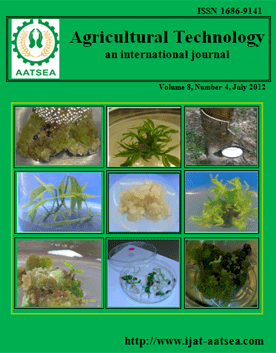ThaiScience
ThaiScience
INTERNATIONAL JOURNAL OF AGRICULTURAL TECHNOLOGY
Volume 16, No. 06, Month NOVEMBER, Year 2020, Pages 1331 - 1348
Effects of different sources of probiotic encapsulation on some physico-chemical characteristics, viability, acceptability and its microstructure in probiotic salak juice
Chanawanno, T. and Mongkontanawat, N.
Abstract Download PDF
The results displayed that salak juice fermented with soygurt (richesse) had high acceptability with a score of 7.33 (moderately like). As a result of the living probiotic located in the capsules, there were little changes in the pH and titrable acidity which slightly decreased and then increased until fermentation reached at 30°C in 72 hours. Interestingly, the level of the living cells of all probiotic salak juices was at the standard level by the FAO/WHO (over 6 log CFU/ml) in all treatments. This encapsulation method protected the probiotic cells; therefore, the viability of the salak juice was slightly stable. However, the addition of the probitic calcium alginate capsules did not affect the vitamin C concentration. For the microstructure of the capsules, the SEM showed that all probiotic calcium alginate capsules were round and oval, and the probiotic cells were located in the capsules. Overall, these results could be an alternative healthy non-dairy probiotic source for vegetarians and milk-allergic consumers. Moreover, the highlight of research finding is the first novel non-dairy probiotic salak juice, which could provide health benefits from the fruit and living probiotic.
Keywords
Probiotic, Encapsulation, Salak juiceINTERNATIONAL JOURNAL OF AGRICULTURAL TECHNOLOGY
Published by : Association of Agricultural Technology in Southeast Asia (AATSEA)
Contributions welcome at : http://www.ijat-aatsea.com
